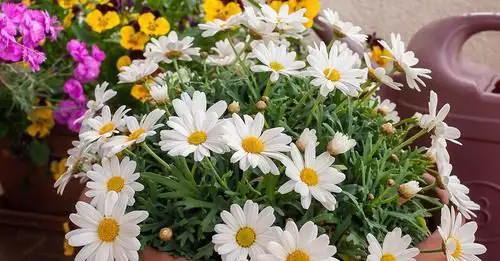Daisies, with their cheerful blooms and easygoing nature, are a delightful addition to any garden or landscape. While they are typically known for their preference for well-draining soil, daisies can also thrive in wet soil conditions when provided with ample sunlight. In this comprehensive guide, we’ll explore the steps to successfully grow daisies in wet soil and full sunlight, allowing you to enjoy their vibrant blooms all season long.
Step 1: Selecting the Right Daisy Variety
When growing daisies in wet soil and full sun, it’s essential to choose a variety that can tolerate these conditions. Some daisy varieties that are well-suited to wet soil include Shasta daisies (Leucanthemum x superbum), Marsh marigolds (Caltha palustris), and Oxeye daisies (Leucanthemum vulgare). These varieties are known for their resilience and adaptability to moist environments.
Step 2: Choosing the Growing Location
Daisies thrive in full sunlight, so choose a location in your garden or landscape that receives at least 6 to 8 hours of direct sunlight per day. Ensure the area has adequate drainage to prevent waterlogging, as daisies prefer moist but not waterlogged soil. If your soil tends to retain water, consider planting daisies in raised beds or containers to improve drainage.
Step 3: Preparing the Soil
Before planting daisies, amend the soil with organic matter such as compost or well-rotted manure to improve soil structure and fertility. This will help retain moisture while providing essential nutrients for healthy growth. Avoid compacting the soil, as daisies prefer loose, friable soil that allows for good root development.
Step 4: Planting Your Daisies
If planting daisies from seeds, sow them directly into the prepared soil surface and cover lightly with a thin layer of soil. Water gently to settle the seeds into the soil. If planting daisy seedlings or transplants, dig a hole slightly larger than the root ball and place the plant in the hole at the same depth it was in its nursery container. Backfill with soil and water thoroughly.
Step 5: Watering and Maintenance
While daisies prefer moist soil, it’s essential not to overwater, as this can lead to root rot and other fungal diseases. Water daisies deeply once a week during dry periods, allowing the water to penetrate the root zone. Mulch around the base of the plants with organic mulch such as straw or wood chips to help retain soil moisture and suppress weeds.
Step 6: Pruning and Deadheading
To encourage continuous blooming, deadhead spent flowers regularly by pinching or cutting them off at the base of the stem. This will redirect the plant’s energy into producing new blooms rather than setting seeds. Prune daisies in early spring to remove dead or damaged growth and shape the plants as desired.
Step 7: Protecting from Pests and Diseases
Monitor your daisies regularly for signs of pests such as aphids, caterpillars, or snails, and treat infestations promptly with insecticidal soap or other organic pest control methods. Keep the area around the plants clean and free of debris to reduce the risk of fungal diseases such as powdery mildew or leaf spot.
Conclusion
With proper care and attention, daisies can thrive in wet soil and full sunlight, providing a burst of color and beauty to your garden or landscape. By following these steps and providing your daisies with the right growing conditions, you can enjoy their cheerful blooms and vibrant presence throughout the growing season. Whether planted in flower beds, borders, or containers, daisies are sure to brighten your outdoor space and bring joy to all who encounter them.

